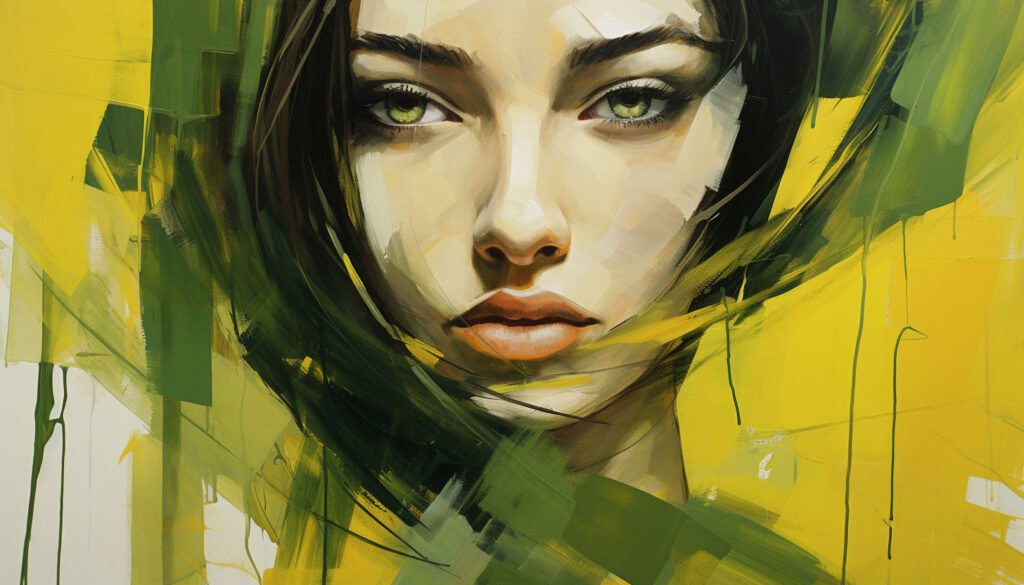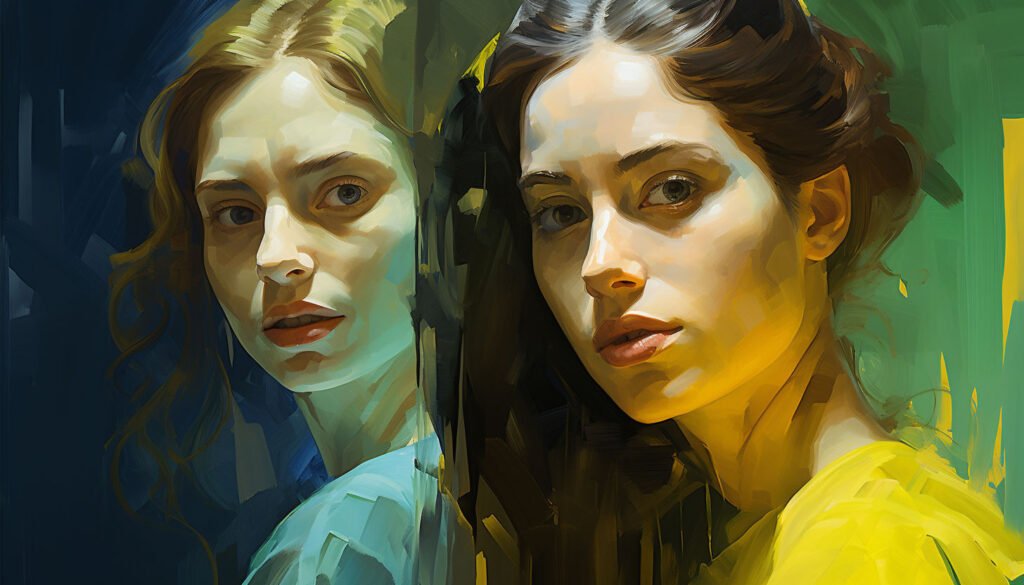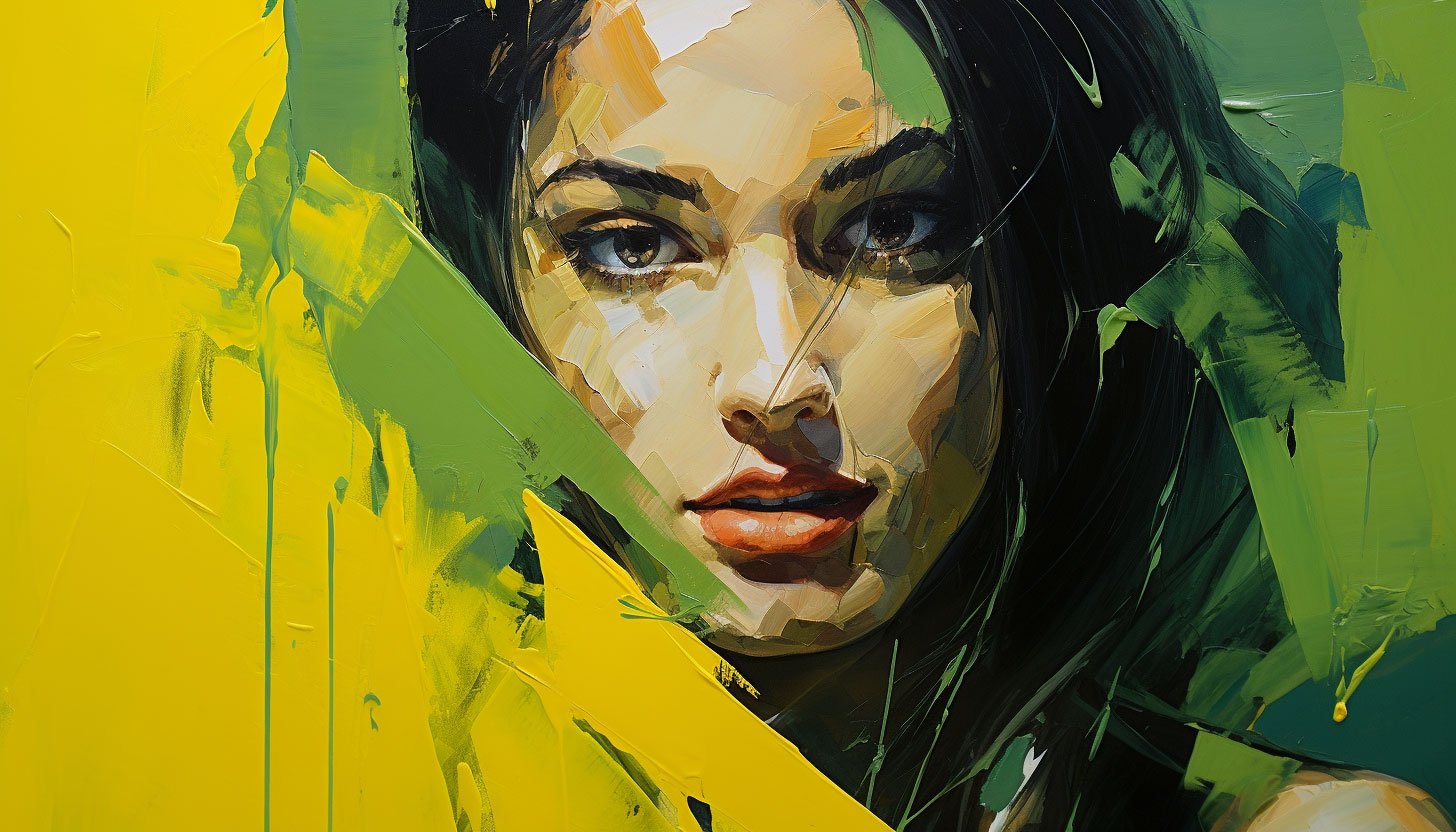History of Green
Throughout history, green has held great significance, representing a range of meanings and concepts. In ancient times, green was closely tied to fertility, growth, and rebirth, as it was intricately linked with the natural world and its plants. In many cultures, green was also imbued with religious or spiritual importance. Even in art and decoration, green has a long and storied history, dating back to ancient Egypt and Rome. However, the challenge of creating stable green pigments meant they remained relatively rare in specific artistic contexts.

Color Theory of Green
Green is a secondary color in color theory, resulting from a mixture of blue and yellow in equal measure. It occupies a position between blue and yellow on the color wheel. Additionally, green serves as a complementary color to red. As such, they rest on opposite sides of the color wheel and amplify each other’s impact when combined.
Interesting Facts about Green
1. The term “green” is believed to have originated from the Old English word “grene,” which has Germanic and Scandinavian roots.
2. The human eye is more sensitive to variations in the green part of the spectrum, which is why green lasers and lights are often used in astronomy and other scientific applications.
3. The green M&M candy was temporarily discontinued in the 1970s due to concerns about the dye’s safety, but it was reintroduced later.
4. “Greenwashing” refers to the deceptive use of green marketing to convey an environmentally friendly image without implementing sustainable practices.
Color Science of Green
Understanding the science of color, it’s essential to note that green light falls within the wavelength range of 520-570 nanometers. Our eyes contain specialized cells known as cones that detect various light wavelengths. With three types of cones working together, we can perceive various colors, including green.

Green Color in the Printing Industry
To achieve green in the printing industry, a combination of cyan and yellow inks is commonly used to create a vibrant hue. Green can be represented and reproduced differently depending on the color model, such as RGB for electronic displays and CMYK for printing purposes.
Green Color in the Renaissance Era
The Renaissance era witnessed a surge in the availability of green pigments, including the famous “verdegris” – a green-blue pigment derived from copper. This vibrant green shade was widely used by renowned artists like Leonardo da Vinci and Jan van Eyck in their artworks.
Color Psychology of Green
Green is frequently associated with nature, tranquility, growth, and renewal. Additionally, it is often connected with sensations of freshness, relaxation, and harmony. Color psychology suggests that green can have a soothing influence, promoting balance and positivity.

Green in the Advertising Industry
When it comes to advertising, green is a powerful tool for communicating messages of eco-friendliness, health, and naturalness. This is especially true for brands prioritizing sustainability and organic products, as they often incorporate green into their logos and packaging. Additionally, green can evoke feelings of harmony and trustworthiness, making it an ideal choice for industries such as finance and healthcare. Remember that cultural and contextual differences can impact how people interpret colors, but understanding the general significance of green can help you use it strategically in your marketing efforts.





